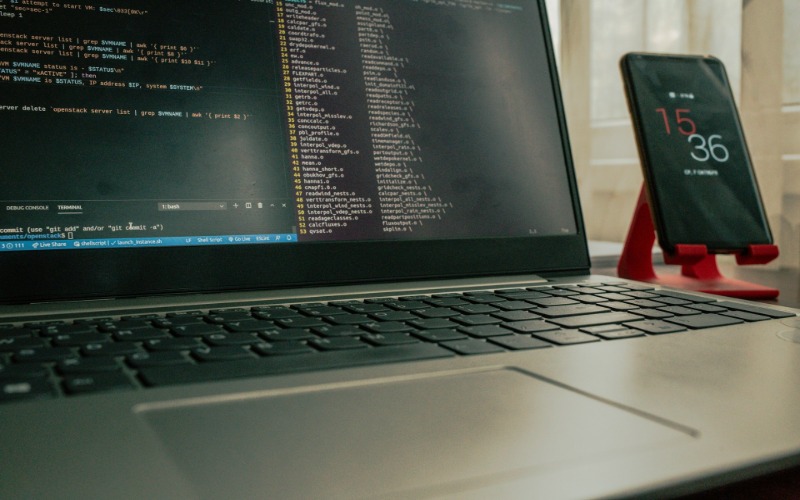Cybersecurity in the digital age protecting your data against emerging threats is not just about keeping up, it’s about staying ahead. Users like you seek effective ways to ensure cybersecurity in the digital age protects your data against emerging threats.
This article charts a course through the latest cybersecurity challenges and offers practical solutions to shield your sensitive information. Expect insights into the evolving landscape of digital threats and the defense mechanisms tailored for an interconnected world.
Understanding Cybersecurity in the Digital Age
Cybersecurity resembles a complex puzzle, where each piece presents a unique obstacle. The evolution of malware has primarily defined the generations of cyberattacks, marking a continuous struggle against evolving cyber threats.
Our defenses need to advance with threats’ growing sophistication. A modern cybersecurity infrastructure requires a consolidated design with integrated solutions that can effectively combat various threats.
However, achieving this has its challenges. Today’s cybersecurity teams grapple with complex architectures and find that piecemeal solutions are unsustainable in the long run. Current trends in cybersecurity are shaped by reactions to prominent cyber threats, advancements in technology, and the enduring need to maintain stringent security objectives.
A flexible cybersecurity strategy is a prerequisite in the relentless battle against ever-evolving security risks.
Securing Online Poker Through Cryptocurrency
Digital cash like Bitcoin and Ethereum transforms online poker security. As internet transactions rise, poker sites adopt crypto to give players anonymity and safety. Blockchain tech behind crypto ensures each transaction records on a public ledger, making tampering or fraud hard. This reduces risks like hacking and identity theft – issues with traditional online finance.
Crypto use in online poker shows how gaming sites are upping cybersecurity to protect user data. Many implement encryption and two-factor authentication (2FA) to lock digital wallets and personal details. These protect players and build trust, which is key as online poker grows. These innovations show robust cybersecurity, showing how new tech can boost digital safety.
Also, cryptocurrency integration offers poker players privacy. Traditional banking involves sharing financial data, risking theft or misuse. Crypto lets users make anonymous purchases using unique digital addresses. Nobody can trace payments back to real-world identities or bank accounts. This appeals to privacy-conscious players seeking an extra layer of discretion.
Overall, crypto’s anonymity and security are ideal for safe play video poker gaming. As adoption spreads, cryptocurrency will likely transform how we gamble online, balancing privacy and fairness.
The Landscape of Cybersecurity Threats

In the ever-changing realm of cybersecurity, threats have progressed through five distinct evolutionary phases. Each new stage introduces increasingly complex and formidable challenges to digital safety.
Modern malware is characterized by its rapid speed, covert nature, and intricate design, significantly elevating the threat level.
As we explore cybersecurity territory, it’s essential to analyze how these threats have transformed over time and acknowledge their present dangers.
This includes examining advancements in ransomware tactics that now involve complicated techniques such as double and triple extortion attacks leveraging the Ransomware as a Service (RaaS) framework.
Evolving Threats and Novel Risks
Our digital landscape’s continuous advancements are a catalyst for the increasing complexity of cyber threats. As malicious actors use expansive data analytics, they refine their attack methods to hone in on targets more precisely and amplify their destructive effects.
They deploy sophisticated techniques, such as polymorphic and metamorphic malware, which elude conventional cybersecurity defenses, thus increasing the risk of significant data breaches.
In counteracting these enhanced offensive measures, we observe ransomware attacks escalating in complexity with service-based ransom models, deepfake technology deployment, and strategic assaults on high-stakes data that coerce victims into paying heftier ransoms.
In this ongoing battle within cyberspace, artificial intelligence is harnessed by defenders and attackers. Malevolent entities utilize AI not only to automate onslaughts but also to create self-evolving malware.
Navigating this complex terrain necessitates unwavering alertness about how these evolving threats can profoundly impact individuals and enterprises at large.
Fortifying Your Network Security
Amidst the advancement of cyber threats, fortifying network security has become exceedingly imperative. Adopting protective measures such as setting up firewalls and utilizing encryption techniques to bar unauthorized entry and safeguard sensitive data and assets is crucial.
It’s essential to maintain updated software so that new defense strategies are readily available to address the continuously emerging cyber risks.
Explore the environment. Into this matter will reveal tactics designed to thwart unauthorized access and ensure business continuity in light of potential digital vulnerabilities.
Preventing Unauthorized Access
A crucial element in network security is preventing unauthorized access. Enforcing rigorous password policies compels employees to invent intricate passwords and change them frequently, thus bolstering their accounts’ defense.
The layering effect of multi-factor authentication mandates at least two distinct identifiers before granting entry, considerably reinforcing protection levels. Robust physical security controls are also vital to support these cyber safeguards effectively.
Advanced our protective measures may be, dangers often hide in plain sight. For example, open public Wi-Fi networks typically lack substantial security protocols, leaving online actions vulnerable to interception by unsanctioned entities.
As we navigate the complex terrain of cybersecurity resilience, it becomes imperative to maintain business continuity despite omnipresent cyber threats.
Ensuring Business Continuity
Sensitive data is the cornerstone of commercial enterprises in today’s digital landscape. Generating and maintaining backup duplicates of this vital information is critical to avert potential losses from device breaches.
Through consistent data backup—especially via automated cloud backups—organizations can protect themselves against the risks associated with system malfunctions or cybersecurity threats.
Employing the 3-2-1 strategy for data backup, which consists of having three separate instances of your data stored on two different types of local media, along with an additional copy located off-site, provides a formidable approach to maintaining business continuity.
Ensuring secure storage facilities for these backups and frequent drills to confirm that restoration processes are functional are essential in safeguarding organizational assets and preserving access to crucial information when needed.
Shielding Sensitive Data

Enhancing the security of a network is an essential action, yet securing sensitive data requires additional protective strategies.
The key to shielding this information lies in managing encryption keys with precision within organizations. This includes creating robust encryption keys via dependable random number generators, frequently updating those keys, and implementing a unified system for key management to ensure access remains restricted to approved personnel.
As we delve deeper into this realm, we will also examine specific tactics to bolster the safety of computing devices and mobile links.
Endpoint Security for Computing Devices
In this age of digital connectivity and the prevalence of remote work, the importance of endpoint security has never been greater. Safeguarding devices like smartphones that connect to cloud services is essential in thwarting data breaches and cyber threats.
Endpoint protection systems are particularly critical within hybrid or remote working setups as they track network activity and identify suspect websites and malicious data transmissions.
As we navigate the continuously evolving cybersecurity world, it’s imperative to recognize that everyday devices could become conduits for cyber threats. Ensuring their security goes beyond mere advice. It is an indispensable measure required for safe operation in our interconnected world.
Mobile Security for Connected Devices
Mobile devices, despite their convenience, present unique security hurdles. By employing Virtual Private Networks (VPNs), users can shield their actual IP address and safeguard personal information, particularly when accessing open public networks.
Opting for a paid VPN service provides individuals with a steadier link, access to exclusive servers, and advanced features that bolster mobile device protection.
As mobile device use escalates, stringent security measures are critical. Similar to how we protect our physical dwellings upon departure, securing our virtual spaces is essential. Now, it’s time to look into proactive strategies that defend against malicious software intent on compromising mobile device integrity.
Proactive Defense Against Malicious Software
To combat cyber threats effectively, taking proactive steps is crucial. Key elements of a robust defense system include:
- Antivirus software: This is key for ongoing protection and vigilance against various malware, including ransomware, spyware, trojans, and browser hijackers.
- Anti-spyware tools are instrumental in identifying and eliminating spyware that might compromise your online activities by capturing sensitive data.
- Firewalls function as protective barriers between your machine and the internet, thwarting unauthorized entries and thus securing your network.
Employing these instruments will bolster you with an all-encompassing shield from cyber dangers.
Relying solely on defensive software isn’t sufficient. Being up-to-date regarding new malware scams plays a critical role since it equips users to spot potential risks while fostering optimal cybersecurity habits.
As we navigate the complex terrain of cybersecurity, let’s delve into what measures are necessary to protect our identities assiduously.











